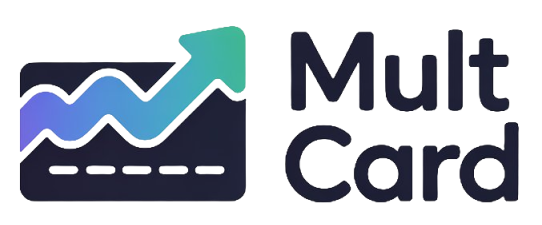Navigating the world of finance can feel overwhelming, but the digital age has brought a new level of convenience to borrowing money. Online loans have emerged as a popular alternative to traditional banking, offering speed and accessibility right from your home. This shift means you no longer need to schedule appointments or wait in long lines to secure the funds you need.
However, with this convenience comes the need for careful consideration and a clear understanding of the process. This comprehensive guide will walk you through every stage, from initial preparation to managing your repayments, ensuring you can confidently and safely apply for an online loan that fits your financial situation.
Understanding Online Loans: The Basics
Before you dive into applications, it’s crucial to grasp what an online loan is and the different forms it can take. Unlike a loan from a brick-and-mortar bank, an online loan is managed almost entirely through digital platforms, from the application and document submission to funding and repayment. This efficiency is a major draw for many borrowers.
Types of Online Loans Available
The term “online loan” is a broad category. Lenders offer various products tailored to different needs, each with its own structure and terms. Here are some of the most common types you’ll encounter:
- Personal Loans: These are versatile, unsecured loans (meaning no collateral is required) that can be used for almost any purpose, such as debt consolidation, home renovations, or major medical expenses. They are typically repaid in fixed monthly installments over a set period (e.g., 2-7 years).
- Payday Loans: Short-term, high-cost loans designed to be repaid on your next payday. While easy to obtain, they often come with extremely high interest rates and fees, making them a risky option that should be approached with extreme caution.
- Installment Loans: This is a broad category that includes personal loans. The borrower receives a lump sum of money upfront and repays it with regularly scheduled payments, or installments, over a period of time.
- Lines of Credit: Unlike a loan where you get a lump sum, a line of credit gives you access to a set amount of funds you can draw from as needed. You only pay interest on the amount you use, making it a flexible option for ongoing or unexpected expenses.
Pros and Cons of Applying Online
The digital application process offers distinct advantages, but it’s not without its drawbacks. Weighing the good against the bad is a key step in deciding if it’s the right choice for you.
| Pros | Cons |
|---|---|
| Convenience: Apply anytime, anywhere, without visiting a physical branch. | Less Personal Interaction: Customer service can be limited to chat, email, or phone calls, which may feel impersonal. |
| Speed: Many online lenders offer quick decisions (sometimes in minutes) and fast funding (often within 1-2 business days). | Risk of Scams: The anonymous nature of the internet makes it easier for predatory lenders and scammers to operate. |
| Comparison Shopping: It’s easier to compare rates and terms from multiple lenders online using comparison tools. | Potentially Higher Rates for Some: While competitive, some online-only lenders may have higher rates than a local credit union, especially for those with less-than-perfect credit. |
| Wider Access: Online lenders often have more flexible eligibility criteria, opening up options for those with lower credit scores. | Requires Tech Savviness: The entire process is digital, which can be a barrier for those uncomfortable with technology. |
Step 1: The Preparation Phase – Getting Your Ducks in a Row
Success in securing a favorable loan starts long before you fill out an application. Proper preparation will not only streamline the process but also increase your chances of approval and help you land better terms.
Assess Your Financial Health
First, take an honest look at your finances. Lenders will do this, so it’s best you do it first. Understand your monthly income, your fixed expenses (rent, utilities), and your variable expenses (groceries, entertainment). This will help you determine how much of a monthly loan payment you can realistically afford without straining your budget. It’s also wise to calculate your debt-to-income ratio (DTI), as most lenders have a maximum DTI they will accept.
Check Your Credit Score
Your credit score is one of the most significant factors lenders use to determine your creditworthiness. A higher score generally translates to a lower interest rate. Before applying, you should know where you stand. You are entitled to check your credit reports for free from each of the three major bureaus (Equifax, Experian, and TransUnion) once a year. Review them for any errors that could be dragging your score down and dispute them if necessary.
Gather Necessary Documentation
Online lenders still need to verify your identity and income. Having your documents ready will make the application process much smoother. While requirements vary by lender, you should generally prepare the following:
- Proof of Identity: A government-issued photo ID, such as a driver’s license, state ID, or passport.
- Proof of Address: A recent utility bill, lease agreement, or bank statement with your name and address.
- Proof of Income: Recent pay stubs, W-2s, tax returns (especially if self-employed), or bank statements showing direct deposits.
- Social Security Number: You will need this for identity verification and for the lender to check your credit.
- Bank Account Information: The routing and account numbers for the account where you want to receive the funds and from which payments will be made.
Step 2: Finding and Comparing Lenders
With your financial information in hand, it’s time to find the right lender. The internet is vast, so knowing where to look and what to look for is key to avoiding bad deals and potential scams.
Key Factors to Compare
Don’t just look at the advertised interest rate. The true cost of a loan is more complex. As you compare offers, pay close attention to the following:
- Annual Percentage Rate (APR): This is the most important number. The APR includes the interest rate plus any additional fees (like origination fees), giving you a more accurate picture of the loan’s total annual cost.
- Fees: Look for origination fees (a percentage of the loan amount deducted from your funds), late payment fees, and prepayment penalties (a fee for paying the loan off early). Ideally, you want a loan with minimal fees.
- Loan Term: This is the length of time you have to repay the loan. A longer term means lower monthly payments but more interest paid over the life of the loan. A shorter term means higher payments but less overall interest.
- Customer Reviews: See what other borrowers have to say. Check sources like the Better Business Bureau (BBB) and Trustpilot for unbiased reviews about the lender’s customer service and transparency.
Red Flags: How to Spot a Predatory Lender
Unfortunately, not all online lenders are legitimate. Protecting yourself means knowing how to spot the warning signs of a scam. Be wary of any lender that:
- Guarantees Approval: Reputable lenders will always review your financial profile before approving you. A guarantee is a major red flag.
- Demands Upfront Fees: A legitimate lender will never ask you to pay a fee before you receive your loan funds. Origination fees are taken from the loan proceeds, not paid out of your pocket beforehand.
- Pressures You to Act Immediately: Scammers create a false sense of urgency. A good lender will give you time to review the loan agreement thoroughly.
- Is Not Transparent About Fees and Terms: If the lender is evasive about the APR or other costs, walk away.
Learning more about avoiding predatory lending scams is a critical step in protecting your financial well-being.
Step 3: The Online Loan Application Process – A Walkthrough
Once you’ve chosen a few reputable lenders, the application process can begin. Most lenders use pre-qualification to give you a sense of what you might be approved for without a major impact on your credit.
Understanding Pre-qualification vs. Pre-approval
Many lenders first offer a pre-qualification step. This involves providing basic financial information, and the lender performs a “soft” credit check, which does not affect your credit score. It gives you an estimate of the rate and term you might receive. After pre-qualifying with a few lenders, you can choose the best offer and proceed to the formal application, which typically involves a “hard” credit inquiry.
Filling Out the Application Form
The formal application will ask for more detailed information, including your full name, address, Social Security number, employment details, and income. Be accurate and honest. Any discrepancies between your application and your supporting documents can cause delays or result in a denial.
Submitting Your Documents Securely
You will be asked to upload the documents you gathered earlier. Always use the lender’s secure online portal for this. Never send sensitive documents like your ID or bank statements over standard email, as it is not a secure method of transmission.
Step 4: Reviewing the Loan Offer and Finalizing
If your application is approved, the lender will present you with a formal loan agreement. This is the most critical document in the entire process. Do not skim it.
Carefully Read the Loan Agreement
This legally binding contract outlines all the specifics of your loan. Verify that the APR, loan amount, monthly payment, and loan term match what you were offered. Pay special attention to the fine print regarding fees, penalties, and the lender’s policies if you have trouble making a payment. If anything is unclear, ask for clarification before you sign.
Accepting the Offer and E-Signing
If you agree with all the terms, you will electronically sign the document. An e-signature is just as legally binding as a handwritten one. Once you sign, you are obligated to repay the loan according to the terms laid out in the agreement.
After You’re Approved: Managing Your Online Loan
Securing the loan is only half the battle. Responsible management is key to ensuring it remains a financial tool, not a burden.
Setting Up Repayments
Most lenders offer an autopay option, which automatically deducts the payment from your bank account each month. This is an excellent way to ensure you never miss a payment. If you prefer to pay manually, set reminders for yourself a few days before the due date.
The Importance of On-Time Payments
Your payment history is the single biggest factor affecting your credit score. Making on-time payments every single month will help build a positive credit history and improve your score over time. Conversely, late payments can significantly damage your credit and incur hefty fees.
Final Thoughts on Securing Your Online Loan
The ability to secure financing from your computer is a powerful tool for managing your financial life. By being prepared, doing your research, and reading every detail, you can navigate the process with confidence. Remember the core principles: assess your own financial situation first, compare multiple lenders to find the best APR and terms, and always be on the lookout for red flags to protect yourself from predatory practices.
Managing debt responsibly is a cornerstone of personal finance. For more in-depth guidance from a trusted source, the Consumer Financial Protection Bureau offers extensive resources on the entire process of how to apply for an online loan and what to consider before you borrow.




